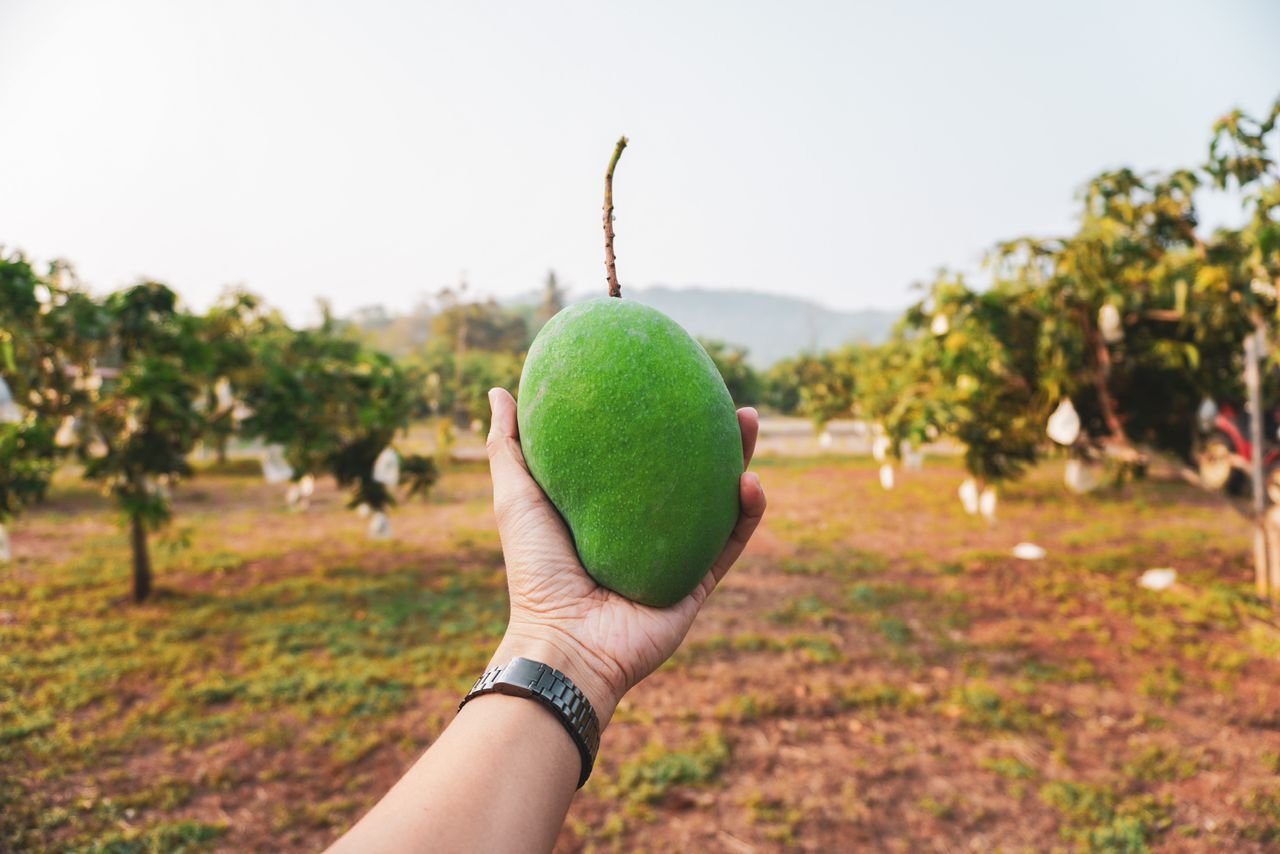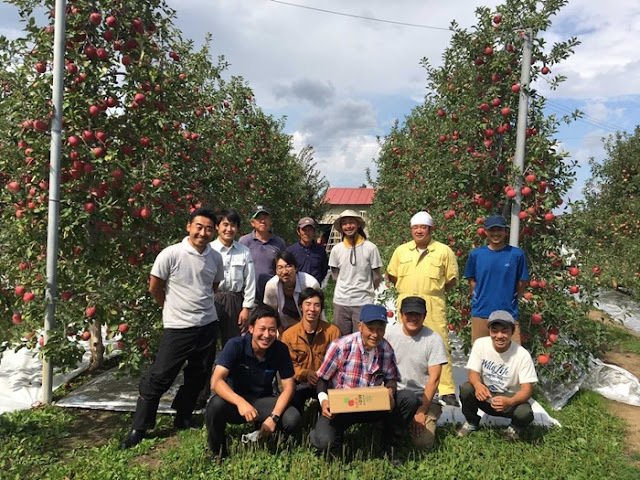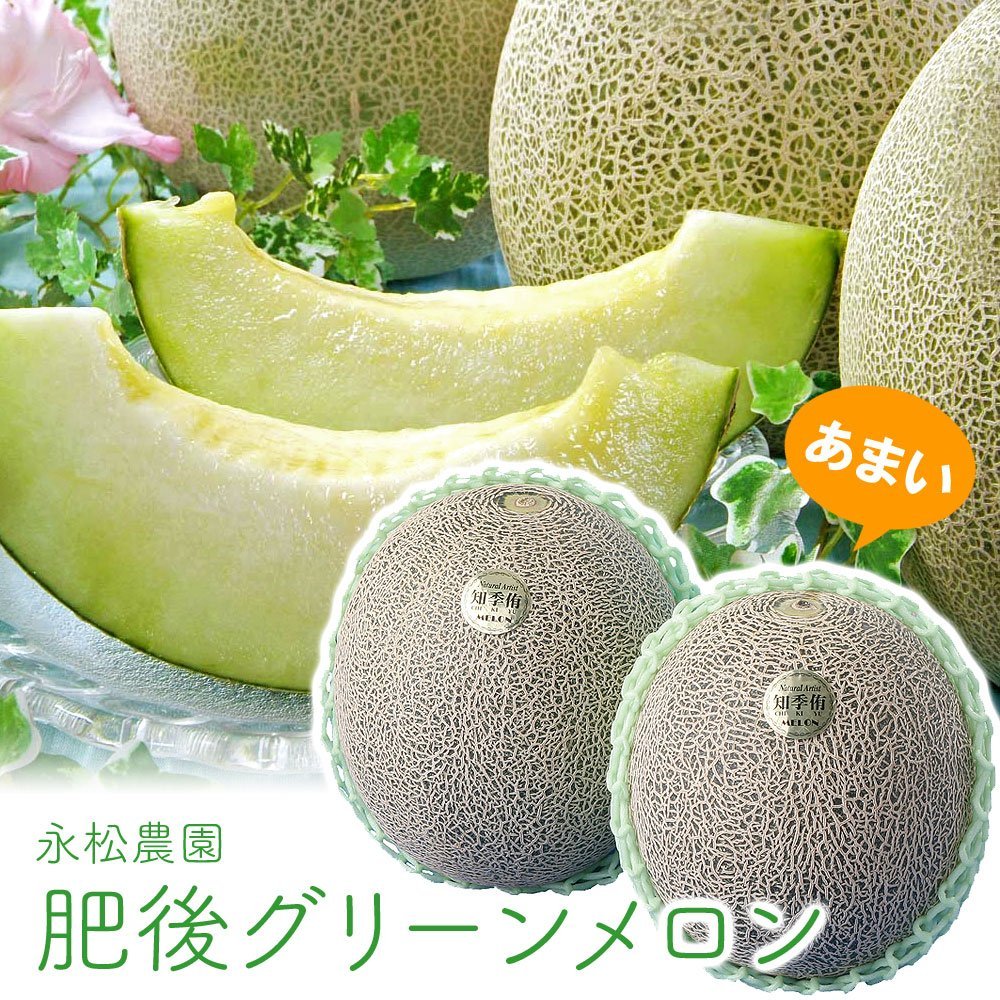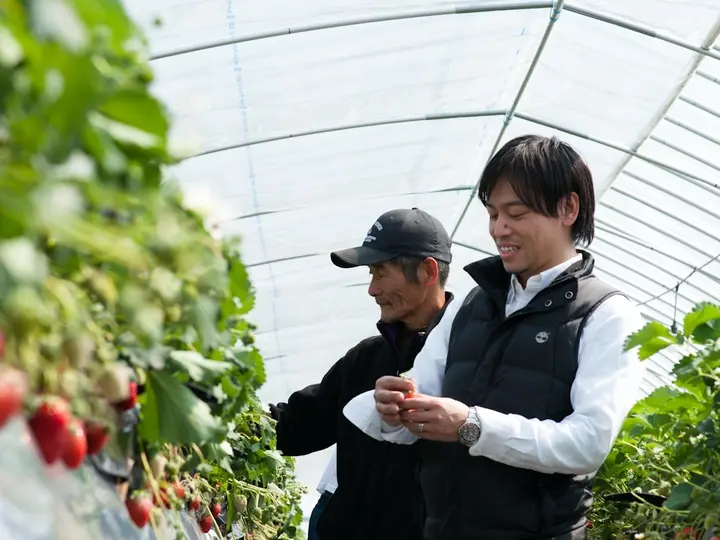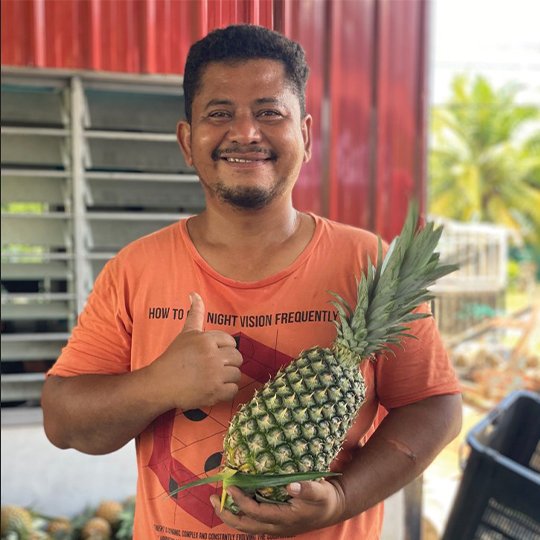In the heart of Tomi City, Nagano Prefecture, nestled at the foot of Mt. Asama, a 67-year-old giant “Mother’s tree” stands tall, symbolising the grape-growing legacy spanning over six decades. Established in 1955 by Kazuhide Takeuchi, the Shukaen vineyard has become synonymous with quality and variety. It is now led by his brother and the representative director, Takanobu Watanabe.
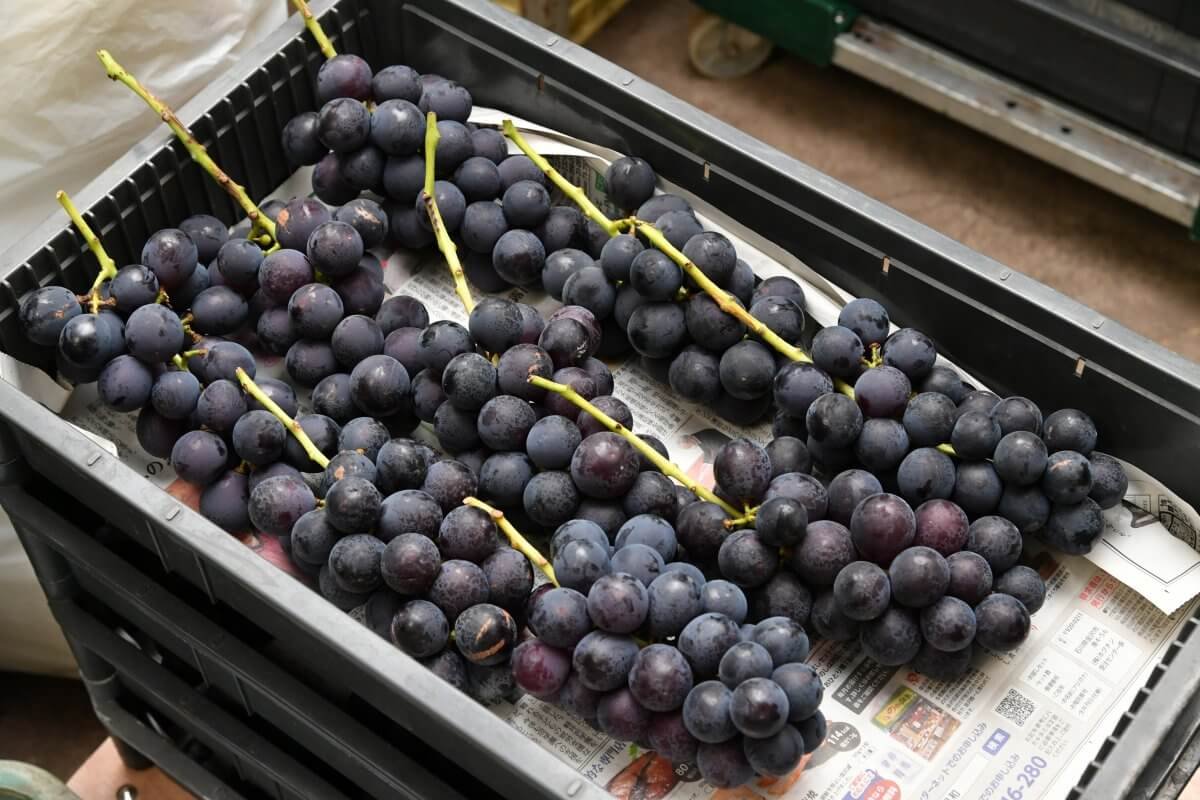
Six Decades of Grape-Growing Excellence
Currently, his vineyard proudly cultivates 29 officially listed grape varieties, with an additional 8 varieties, including experimental cultivations, bringing the total to an impressive 37. Some of the varieties in their inventory are the Kyoho grapes, the Shine Muscat, Nagano Purple, and more. This vineyard began their journey with Kyoho grape rootstock, a seedless grape variety. Recognising the exceptional potential of Kyoho, a grape variety created in 1942 by Yasushi Oinoue in Izu, Takeuchi propagated the seedlings and started cultivating them in the grape-friendly region of Nagano. However, cultivating it was not an easy feat.
With Kyoho grapes being a tetraploid, which translates to a mixture of cells, most of their genes are from European grapes, and a smaller part is from American grapes called Labrusca. They are not only difficult to grow but are also very susceptible to diseases. However, the unique topography and climate of the Nagano region, featuring slopes, scarce rain, and frequent sunshine, provided an ideal setting for grape cultivation.
Undeterred, Takeuchi delved deep into research with his fellow local farmers to cultivate the Kyoho giant grape variety in the Wa area. He was not only committed to ensuring the grapes grew in the best possible conditions but was also dedicated to preserving the deep flavour produced by the grapes. His research bore fruit when he successfully established his vineyard, named Shukaen and in time, through his careful cultivation, the Kyoho grape variety emerged as the leading breed in Japan.
Since the establishment of the Shukaen vineyard, many have testified that the seeded grapes thriving on Shukaen grounds yield a richer flavour compared to their seedless counterparts. It’s widely acknowledged that cultivating grapes with seeds poses greater challenges than cultivating seedless ones, depending on the temperature and surroundings of the vineyard. Hence, the grapes grown in Shukaen are favoured by many.

Shukaen’s Journey Beyond Borders
This success prompted Takeuchi to go international and share his grape cultivation techniques. His first stop was Taiwan, where the results were so outstanding that it became his primary focus. As a result, he requested his brother Watanabe to go to the Philippines in his stead.
During Watanabe’s visit in the 1980s, the Vietnam War had just ended. The price of sugar was on the rise in the Philippines and local research began on alternative crops which were less costly to obtain sugar from. In response, Watanabe joined forces with local researchers to offer his assistance through using his grape cultivation knowledge and techniques. However, it came to a sudden halt due to the EDSA Revolution. As the political situation turned for the worse, Watanabe was forced to return to his homeland without completing his research.
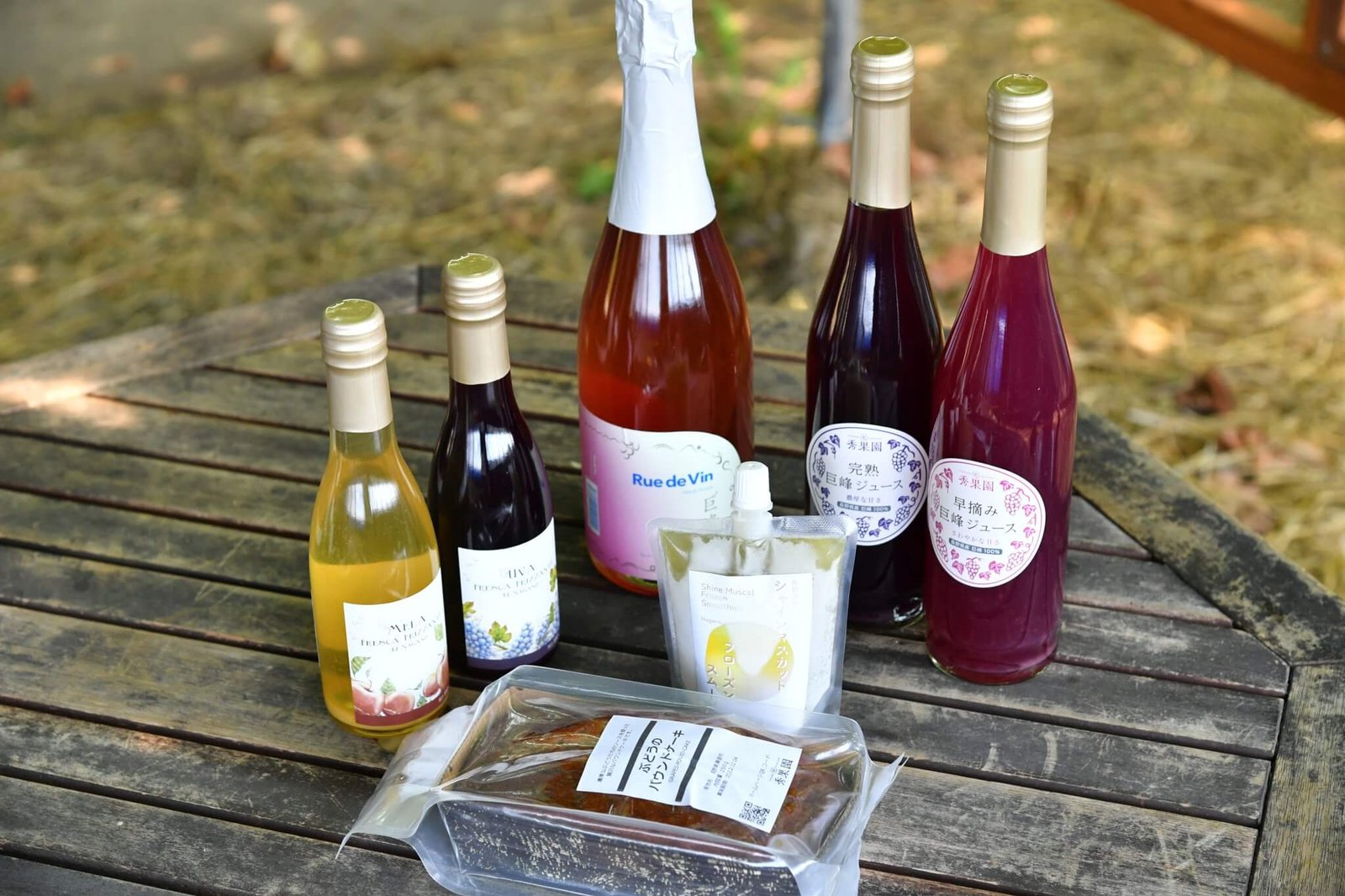
Beyond Grapes – Innovation in Agriculture
Once Watanabe was back in Japan, he ventured into the industrial scene, handling the importation of raw materials for silk spinning from various Asian countries. However, 20 years ago, at the age of 44, he decided to return home and take over his family vineyard. During his return, he noticed that the price of the Kyoho grapes slumped as it is now grown all across the country. Therefore, in order to become profitable again, he introduced a strategy where he only sold high quality grapes to high-end fruit stalls. This strategy proved to be a success as from then onwards, the Shukaen farm only sold their produce to high-end fruit stalls.
Anticipating the boom and hype over their grapes, Takanobu decided to diversify his grape products by innovating the grapes as juices to introduce a fresh and new product. The grape juice was made by squeezing out grapes which have ripened for a long time on the tree to obtain its refreshingly sour taste. In addition to that, they also produce wine, pound cake, semi-dried grapes and Shine Muscat frozen smoothies.

Among the many varieties produced by Shukaen, the top sellers are the seeded Kyoho grapes and the Shine Muscat. The Shine Muscat, in particular, is highly popular amongst the public and here are some of its primary characteristics.
Aromatic Delight: The enticing aroma of Shine Muscat delicately wafts through the air, leaving a sweet and refreshing scent that heightens the anticipation of each bite.
Crunchy Indulgence: Sink your teeth into a Shine Muscat and experience an immediate explosion of juiciness and succulent texture. The satisfying crunch adds an extra layer of delight to this exquisite grape variety.
Sustaining Excellence and Global Impact
Shukaen doesn’t just grow grapes; the vineyard is the proof of their commitment to revolutionize agriculture. Not only are Shukaen’s grapes enjoyed locally, but they’ve also become a global sensation through direct sales and our online shop. To safeguard Shukaen’s grape mastery, Watanabe initiated a program for passionate individuals, whether they’re farming pros or newbies, to refine their skills while working with diverse grape varieties. With an increasing number of young, passionate farmers joining the program, we can expect even more from Shukaen!



